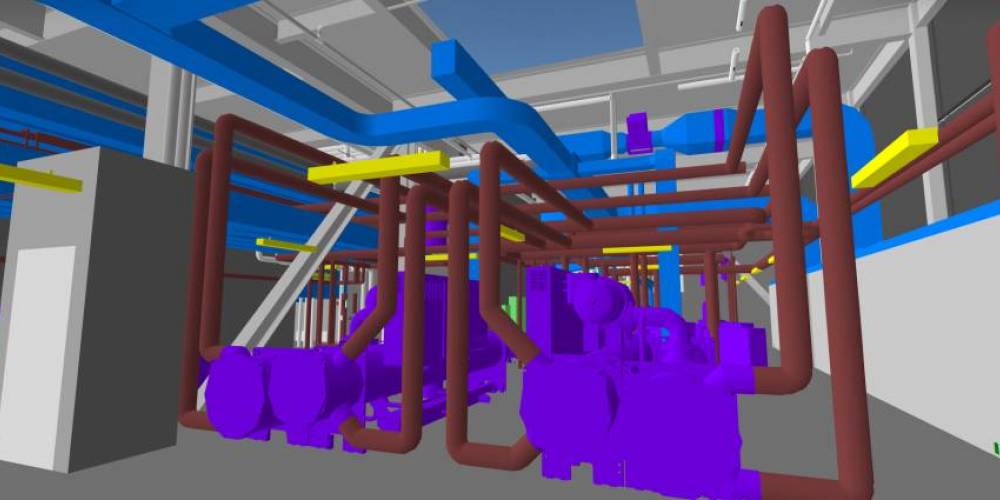
Designing the perfect set of Construction Documents is the goal of every design firm. As such, the following questions should be asked:
- Did the design team capture the owner’s vision and requirements?
- Are all the disciplines fully coordinated?
- Are the documents detailed enough for the contractors to interpret with no ambiguity?
I think we can all agree that getting to this point requires effective team collaboration and communication. If the entire team is on the same page, then the chances of having a successful project and happy customer increases dramatically. One tool that helps answer all three questions is Virtual Reality.
Virtual Reality (VR) allows an individual or teams to fully immerse themselves into a VR model. Immersing oneself into a VR model is as close as you can get to the real thing and in some respects better. The VR model allows you to walk, fly or teleport throughout the building or an area on site, which means no physical barriers and can view every aspect of the design at any angle or height.
VR has been around for a few years but is starting to be utilized in the A/E/C industry. When the technology was first introduced to the A/E/C industry, the equipment required was expensive and cumbersome to use and translating the model was clunky and time consuming. Today, the equipment operating VR is wireless (without connecting to a desktop) and works via Wi-Fi. Models used for VR can be easily converted from Revit/Naviswoks 3D model and the VR model can also be updated every time the Revit model is synched on the cloud (via BIM360).
The benefits of using VR are immense compared to reviewing a set of 2-D paper drawings or viewing on a computer screen while trying to visualize and interpret the drawings.
VR allows owners and facilities operators to walk through their future building, classrooms, offices, libraries, theaters, mechanical rooms, electrical rooms, etc. They are able to see how the architecture, structure and MEP/FP visually interact with each other. For projects that are engineering intensive, they can view chiller/boiler plants, piping and ductwork distribution, panelboards, fire alarm devices and much more. Feedback from these virtual site visits help the team to customize their designs to the owner and facilities’ needs, vis a vis equipment access, valve and pipe arrangements, and working clearances. The owner’s team is able to make decisions along with the AEC design team, before construction dollars are spent and before a shovel hits the ground. It answers the first question - did the design team capture the owner’s vision?
VR is an excellent design and coordination tool which allows the design team to collaborate and coordinate in the virtual world. It lets the architects experience public spaces, which can influence the locations and coordination of visible structural and MEP elements. It allows the engineers to stand in a future mechanical room and coordinate the location of MEP equipment to optimize space efficiencies. It allows the entire team to ensure there are no interferences with each other. Participants in VR sessions can make notes that are tagged to elements in the model (via voice dictation), can measure between components, can sketch during the session, which can be exported as meeting notes for the team as PDF, (i.e. “shift diffuser one ceiling tile east in the office 203” or “ductwork is going thru a structural beam in the penthouse next to column C-14”).
VR can also benefit the construction team. Construction managers can virtually experience the model to help them understand and interpret the design intent and even help procure the trades. They are able to walk the spaces with the different trades to help them in the bidding process or visualize the scope. They can also view the VR model and the electronic 2D construction documents side-by-side. Interpreting the construction documents, as intended, helps minimize RFI’s and make for a more efficient process.
VR is in its infancy in the A/E/C industry and its benefits are just beginning to unfold. We envision a future where VR is used not only as a coordination and collaboration tool, but for commissioning and training purposes as well. Put on your VR headset and let’s go!
To Be Published in High Profile May 2019 Issue
